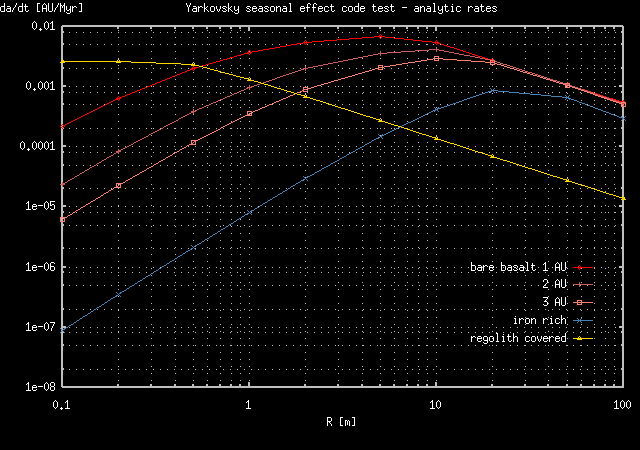
The test runs of new version of swift_rmvsy program, which includes also seasonal variant of Yarkovsky thermal effect, are presented. The main aim is to reproduce results from Farinella et al. (1998). Analytical calculations lead to following drift rates in semimajor axis for three basic types of asteroid fragments.

The following graphs was inspired by paper Bottke, W. et al.: Dynamical Evolution of main Belt Meteoroids: Numerical Simulations Incorporating Planetary Perturbations and Yarkovsky Thermal Forces. Draft of paper for Icarus Feb 19th 1999.
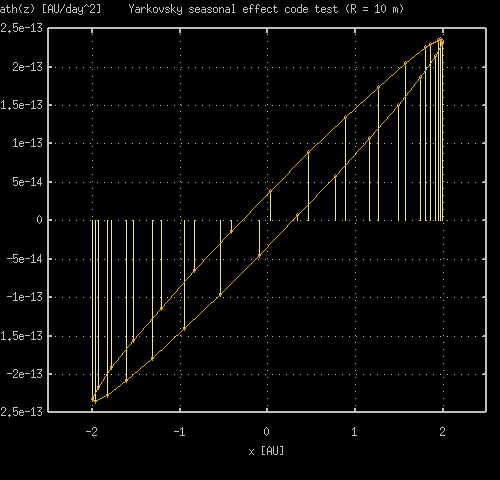 |
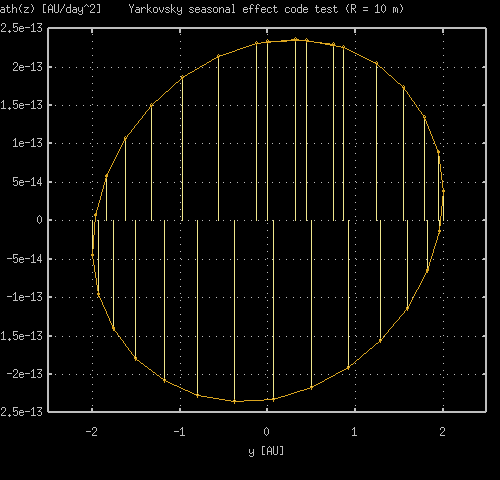 |
Dependence of z - component of thermal acceleration ath(z) on x or y coordinates for one orbital revolution of 10 m asteroid fragment. The vectors of ath are marked with bright vertical lines. The time step was 36.525 day, spin axis orientation was (1,0,0). The value of thermal lag angle could be observed as a ratio of orange ellipses major axes. Smaller lag angle leads to narrower ellipse on the left side picture.
 |
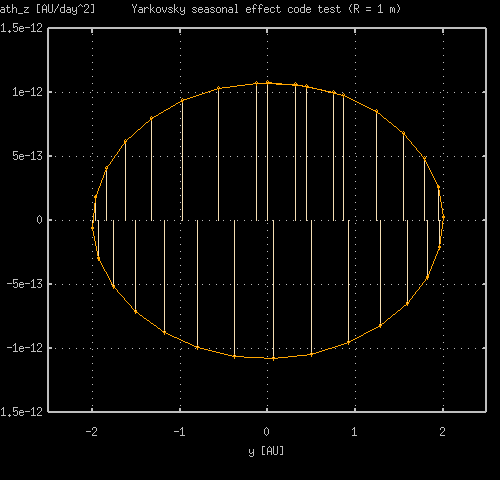 |
The same two pictures are reproduced for a smaller asteroid fragment with radius R = 1 m. Notice that thermal accelerations are approximately 5 times larger than in previous case, while thermal lag angle is much smaller.
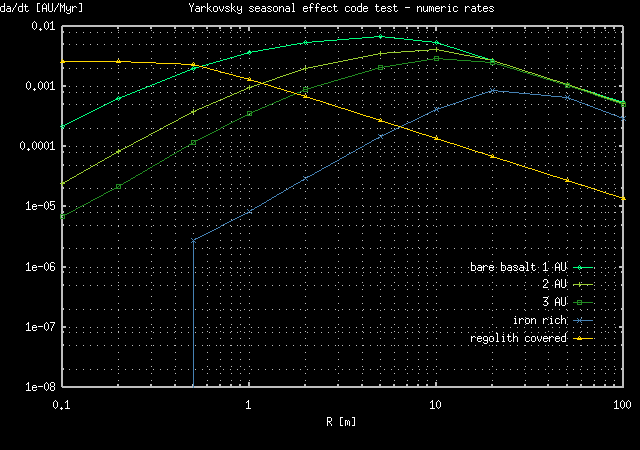
These are linear drift rates calculated from outputs of swift_rmvsy program. The integration time was 0.1 Myr. Startup semimajor axes were taken 2 AU for iron rich and regolith covered fragments and 1 AU, 2 AU, 3 AU for bare basalt bodies. All startup values of other orbital elements were zeroes. Spin axes of all fragments lie in orbital plane (ie. maximal seasonal drift rate, due to cos2(obliquity) dependence). However, the time of integration was not long enough to calculate drift rates for small iron rich fragments, this could be seen in graphs as a termination of blue line near R = 5 m.